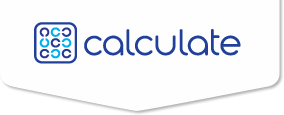Countering the Decline: How to Sell Small Liberal Arts Colleges to Gen Z

- “Growing Number of Small Colleges Struggling to Stay Afloat” (Associated Press)
- “The Truth Teller: Once a Small-College Champion, Now a Tough Critic” (Chronicle of Higher Education) (Subscription)
Both articles outline a bleak future for small, private, liberal arts colleges due to declining enrollment. “The Wall Street rating agency Moody's predicts the number of four-year, nonprofit colleges closing annually will triple in the next few years, while mergers will more than double,” Frank Eltman and Collin Binkley wrote in the AP report.
The enrollment struggle is attributed to a variety of factors, indicative of the complexity of enrollment itself: rising tuition costs, fewer college-age students, and the lingering affect of the recession on family income.
Yet those who work in these institutions know the enormous value they bring. Alice Brown, the ascribed “truth teller” in Lawrence Biemiller’s article, notes: “All these little schools give students so many opportunities” and "There are a lot of kids whose lives aren’t going to be as rich as they could be without the liberal arts."
Likewise, there’s tons of data to support the value of a personalized liberal arts education and how it cultivates the skills employers seek. In this regard, these institutions have great selling points, so why are they struggling to attract students?
Perhaps it’s not a question of what or how to sell, but where. Are we reaching today’s students “where they live” — on the digital landscape? Our messages go farther when we do.
Today’s students, members of Generation Z, are the first true digital natives. They are online not only to socialize, but to complete tasks — a key one being college search.
Here’s what they tell us about their college search habits*:
- They put a lot of stock in an institution’s website: 78% say it affects their perception of a school
- They find schools through search engines — SEO matters!
- Once on the web site, they expect clarity: If they can’t find what they’re looking for, they may very well dismiss the school outright
- What they’re looking for: list of majors, costs/financial aid, enrollment-related content (applications, counselor contact, open houses and events)
- Their attention span is 8 seconds
- They use social media (especially Facebook) to see what life is like at a particular school
- More and more, they are clicking on digital ads to learn about an institution
- They respond to authentic forms of advertising — not jargon or spin, but testimonials and success stories
This last bullet point provides a distinct advantage to small institutions: they excel at transforming students and setting them up for a lifetime of personal and professional success. It is a story to be captured and shared — both in the “real world” and on the digital one.
*Research provided by Rufalo Noel Levitz & Ologie

